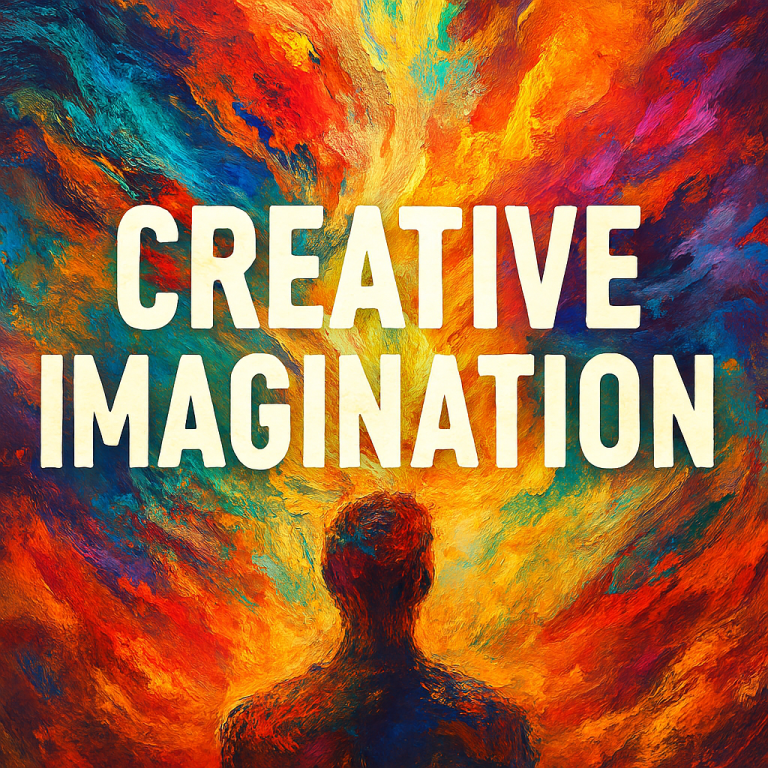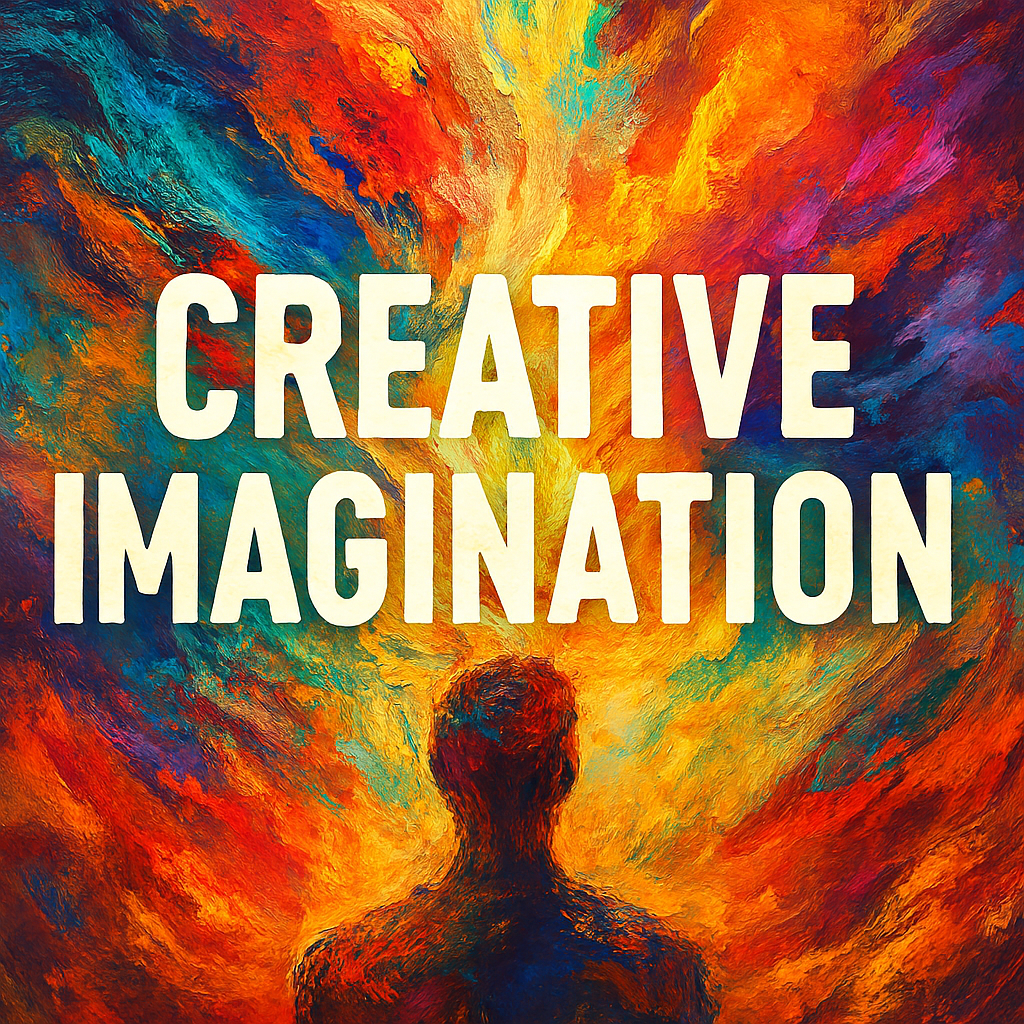
Emotional Relevance
Relevance In Imagination – Understanding The Core Of Relevance
Imagination is not a random act of creativity but a structured psychological process that thrives on relevance. When the human mind generates images, scenarios, or symbolic patterns, it does so by filtering through relevance markers that connect ideas to lived experience. Relevance ensures that imagination is not detached from reality but instead becomes a bridge between abstract thought and practical meaning. Without relevance, imagination risks becoming incoherent, failing to resonate with individuals or communities. This interplay between imagination and relevance is central to how humans create art, design systems, and interpret symbolic narratives. By examining the psychology of relevance, we uncover how imagination is shaped, directed, and sustained.
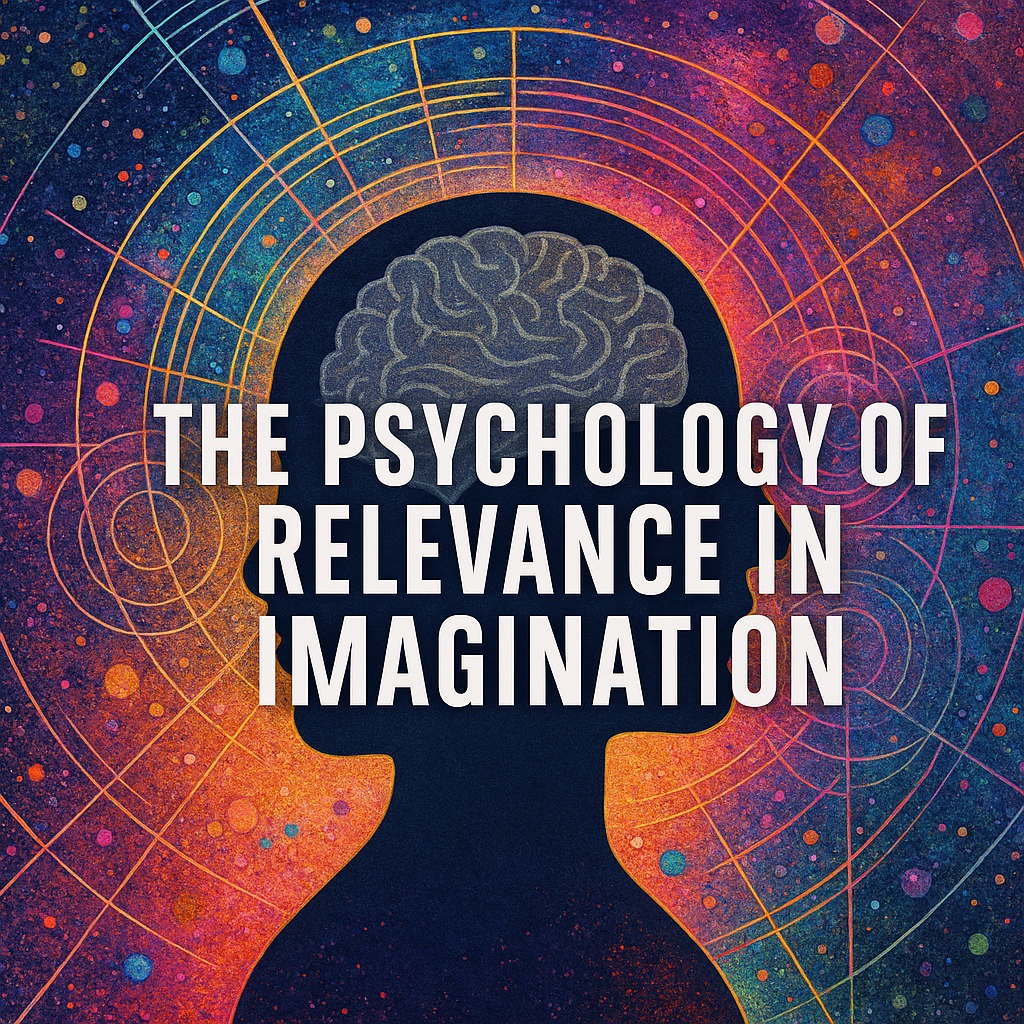
Real Or Fake
Cognitive Foundations Of Relevance
Imagination begins with cognitive structures that prioritize relevance in thought. The brain does not simply generate random associations but organizes them according to memory, context, and emotional salience. Relevance acts as a filter, allowing certain ideas to surface while others remain dormant. This filtering process ensures that imagination produces meaningful outcomes rather than chaotic fragments.
Cognitive psychology highlights that relevance is tied to attention, working memory, and symbolic recognition. When individuals imagine, they draw upon relevant cues from their environment and personal history. These cues anchor imagination in recognizable frameworks, making it easier to communicate and share. Relevance also enhances problem-solving by aligning imagination with practical goals. Thus, imagination is not only creative but also adaptive, guided by relevance markers that shape its trajectory.
| Cognitive Element | Role In Relevance | Impact On Imagination |
|---|---|---|
| Attention | Filters stimuli | Directs imaginative focus |
| Working Memory | Holds relevant cues | Builds coherent scenarios |
| Emotional Salience | Prioritizes meaningful data | Adds depth to imagination |
| Symbolic Recognition | Links ideas to symbols | Creates shared meaning |
| Contextual Awareness | Frames imagination | Ensures cultural resonance |
Relevant In Imaginative Thought
Emotional Anchors In Imagination
Emotions serve as anchors that determine what is relevant in imaginative thought. When individuals imagine, they do not simply construct neutral images but embed emotional resonance into their creations. Relevance emerges when imagination aligns with emotional states such as joy, fear, or nostalgia. These emotions guide the selection of symbols, narratives, and metaphors that feel meaningful.
Emotional relevance ensures that imagination is not only cognitively coherent but also personally impactful. For example, a memory of childhood may inspire imaginative scenarios because it carries emotional weight. This anchoring process allows imagination to connect with identity and personal history. Emotional relevance also strengthens communication, as shared emotions create collective resonance. Without emotional anchors, imagination risks becoming sterile and disconnected from human experience.
- Emotions filter imaginative content
- Joy enhances creative expansion
- Fear sharpens imaginative caution
- Nostalgia links imagination to memory
- Emotional resonance builds collective meaning
- Anchors guide symbolic selection
- Relevance emerges through emotional weight
- Identity shapes imaginative relevance
- Shared emotions foster cultural imagination
- Emotional anchors prevent sterile creativity
Symbolic Mapping Of Relevance
Symbols are central to how imagination organizes relevance. A symbol condenses meaning into a recognizable form, allowing imagination to communicate complex ideas efficiently. Relevance in imagination often depends on symbolic mapping, where abstract concepts are tied to concrete representations. This mapping process ensures that imagination is not lost in abstraction but remains accessible. Symbols act as bridges between personal imagination and collective understanding. For instance, a tree may symbolize growth, resilience, or ecological continuity depending on context. Relevance emerges when symbols resonate with shared cultural or psychological frameworks. Imagination thrives when symbols are flexible yet grounded in relevance. Symbolic mapping also allows imagination to evolve, adapting symbols to new contexts while retaining their core meaning.
| Symbol | Psychological Relevance | Imaginative Function |
|---|---|---|
| Tree | Growth and resilience | Represents ecological continuity |
| Circle | Unity and wholeness | Frames collective imagination |
| Light | Knowledge and clarity | Guides imaginative exploration |
| Water | Renewal and flow | Inspires adaptive creativity |
| Path | Direction and journey | Structures imaginative progression |
Cultural Resonance In Imagination
Culture provides the framework through which relevance in imagination is interpreted. Imagination is not isolated but shaped by cultural narratives, traditions, and collective memory. Relevance emerges when imaginative ideas align with cultural symbols and values. For example, myths and folklore provide symbolic structures that guide imaginative thought. Cultural resonance ensures that imagination is not only personal but also shared across communities. This shared relevance strengthens identity and continuity within societies. Imagination becomes a tool for cultural preservation and innovation when relevance is maintained. Without cultural resonance, imagination risks alienation, failing to connect with collective meaning. Thus, relevance in imagination is deeply intertwined with cultural frameworks that sustain symbolic communication.
- Culture frames imaginative relevance
- Myths provide symbolic structures
- Folklore anchors imagination in tradition
- Collective memory guides imaginative continuity
- Shared values enhance resonance
- Cultural relevance strengthens identity
- Imagination preserves cultural heritage
- Innovation emerges through cultural adaptation
- Alienation occurs without cultural resonance
- Symbolic communication sustains collective imagination
Adaptive Relevance In Problem Solving
Imagination plays a crucial role in problem-solving by aligning with relevance markers. Adaptive relevance ensures that imaginative solutions are practical and effective. The brain filters imaginative possibilities according to contextual needs, prioritizing those that are most relevant. This process allows individuals to generate creative yet applicable solutions. For example, engineers use imagination to design systems, but relevance ensures that designs meet functional requirements. Adaptive relevance also enhances resilience, allowing individuals to adjust imaginative strategies when circumstances change. Problem-solving thrives when imagination is guided by relevance rather than random association. This alignment ensures that imagination contributes to progress and innovation. Adaptive relevance thus transforms imagination into a tool for survival and growth.
| Adaptive Element | Role In Problem Solving | Imaginative Impact |
|---|---|---|
| Contextual Fit | Ensures practicality | Grounds imagination |
| Flexibility | Adjusts strategies | Enhances resilience |
| Innovation | Generates new solutions | Expands imaginative scope |
| Efficiency | Prioritizes relevance | Streamlines creativity |
| Resilience | Adapts to change | Sustains imaginative relevance |
Temporal Relevance In Imagination
Time shapes the relevance of imaginative thought. Imagination does not operate in a timeless vacuum but is influenced by past, present, and future contexts. Relevance emerges when imagination aligns with temporal markers that give meaning to ideas. Memories provide past relevance, anchoring imagination in personal history. Present relevance ensures that imagination responds to immediate needs and circumstances. Future relevance allows imagination to project possibilities and anticipate outcomes. This temporal layering enriches imagination, making it multidimensional. For example, envisioning ecological futures requires integrating past knowledge and present realities. Temporal relevance ensures that imagination remains coherent across time. Without temporal alignment, imagination risks becoming fragmented and disconnected. Thus, time is a critical dimension of relevance in imagination.
- Past relevance anchors imagination in memory
- Present relevance responds to immediate needs
- Future relevance projects possibilities
- Temporal layering enriches imagination
- Time ensures multidimensional coherence
- Ecological futures require temporal relevance
- Memories provide symbolic continuity
- Present circumstances guide imaginative focus
- Future anticipation enhances creativity
- Fragmentation occurs without temporal alignment
Contextual Frames In Imagination
Imagination thrives when it is framed within relevant contexts that provide structure and meaning. Context acts as the boundary that defines what is possible and what resonates. Without context, imagination risks drifting into incoherence, producing ideas that lack connection to reality. Relevance emerges when imagination is guided by situational cues, cultural frameworks, and environmental markers. For example, imagining a future city requires contextual relevance drawn from current urban challenges and technological trends. Contextual frames ensure that imagination remains grounded while still allowing creative expansion. They also provide a shared reference point for communication, making imaginative ideas accessible to others. Relevance in imagination is therefore inseparable from context, as it shapes both the content and the interpretation of creative thought.
| Contextual Frame | Role In Imagination | Relevance Outcome |
|---|---|---|
| Environment | Shapes imaginative boundaries | Ensures ecological resonance |
| Culture | Provides symbolic markers | Strengthens collective meaning |
| Situation | Directs imaginative focus | Aligns with immediate needs |
| History | Anchors imagination in continuity | Preserves relevance across time |
| Technology | Expands imaginative scope | Connects creativity to progress |
Identity And Personal Relevance
Imagination is deeply tied to identity, and relevance emerges when imaginative thought reflects personal meaning. Individuals construct imaginative scenarios that align with their values, experiences, and aspirations. Personal relevance ensures that imagination is not detached from the self but instead becomes an extension of identity. For example, an artist may imagine symbolic landscapes that reflect their inner emotional states.
This alignment between imagination and identity strengthens authenticity and resonance. Personal relevance also enhances motivation, as individuals are more likely to pursue imaginative ideas that reflect their sense of self. Identity provides the lens through which imagination filters relevance, shaping symbolic choices and narrative directions. Without personal relevance, imagination risks becoming generic and disconnected. Thus, identity is a critical anchor for imaginative relevance.
- Identity shapes imaginative resonance
- Personal meaning guides symbolic choices
- Authenticity strengthens imaginative relevance
- Values filter imaginative direction
- Experiences anchor imagination in reality
- Aspirations expand imaginative scope
- Selfhood ensures imaginative authenticity
- Motivation emerges from personal relevance
- Generic imagination lacks identity connection
- Identity anchors imagination in meaning
Ecological Dimensions Of Relevance
Imagination often draws upon ecological relevance, connecting creative thought to natural systems. The environment provides symbolic cues that shape imaginative resonance. For example, forests may symbolize resilience, oceans may represent depth, and mountains may embody endurance. Ecological relevance ensures that imagination remains connected to the natural world, grounding creativity in lived experience. This connection also strengthens sustainability, as imagination guided by ecological relevance often produces ideas that respect environmental continuity. Ecological imagination thrives when relevance aligns with symbolic markers of nature. Without ecological relevance, imagination risks becoming detached from the physical world. Thus, ecological dimensions provide a vital framework for imaginative thought, ensuring that creativity remains both meaningful and sustainable.
| Ecological Symbol | Relevance Marker | Imaginative Function |
|---|---|---|
| Forest | Resilience and growth | Inspires continuity |
| Ocean | Depth and mystery | Expands imaginative scope |
| Mountain | Endurance and strength | Anchors imagination in stability |
| River | Flow and renewal | Guides adaptive creativity |
| Sky | Freedom and openness | Frames expansive imagination |
Social Relevance In Imagination
Imagination is not only personal but also social, shaped by collective relevance. Social frameworks provide cues that guide imaginative thought toward shared meaning. For example, communities imagine futures based on collective values and aspirations. Social relevance ensures that imagination resonates across groups, strengthening cohesion and identity. It also enhances communication, as imaginative ideas gain traction when they align with social markers. Social relevance is particularly important in storytelling, where imagination must connect with audience expectations. Without social relevance, imagination risks isolation, failing to engage others. Thus, imagination thrives when it is guided by social relevance that bridges personal creativity with collective resonance.
- Social frameworks guide imaginative thought
- Communities imagine futures collectively
- Shared values strengthen imaginative resonance
- Cohesion emerges through social relevance
- Communication thrives on shared meaning
- Storytelling requires social resonance
- Audience expectations shape imaginative direction
- Isolation occurs without social relevance
- Collective imagination sustains identity
- Social relevance bridges personal and collective creativity
Symbolic Continuity And Relevance
Imagination sustains relevance through symbolic continuity across time and culture. Symbols act as carriers of meaning, ensuring that imaginative ideas remain coherent and resonant. Continuity allows imagination to adapt symbols to new contexts while preserving their core relevance. For example, the symbol of light has represented knowledge across cultures and eras. Symbolic continuity ensures that imagination is not fragmented but instead builds upon shared meaning. This continuity also strengthens communication, as symbols provide recognizable anchors for imaginative thought. Without symbolic continuity, imagination risks losing coherence and cultural resonance. Thus, relevance in imagination depends on the ability to sustain symbolic meaning across contexts.
| Symbol | Continuity Across Time | Relevance Outcome |
|---|---|---|
| Light | Knowledge and clarity | Sustains imaginative exploration |
| Circle | Unity and wholeness | Frames collective resonance |
| Path | Journey and direction | Guides imaginative progression |
| Tree | Growth and resilience | Anchors ecological imagination |
| Water | Renewal and adaptability | Inspires creative flow |
Collective Narratives And Shared Relevance
Imagination gains strength when it is embedded in collective narratives that communities recognize as relevant. These narratives provide continuity, linking individual creativity to shared cultural meaning. Relevance emerges when imagination reflects collective aspirations, struggles, and values. For example, national myths or community stories often shape imaginative thought by providing symbolic anchors. Shared narratives ensure that imagination resonates across generations, sustaining identity and cohesion. They also allow individuals to situate their personal imagination within a broader social framework. Collective relevance enhances communication, as imaginative ideas gain traction when they align with shared narratives. Without collective narratives, imagination risks fragmentation, failing to connect with communal meaning. Thus, relevance in imagination is inseparable from the stories that societies tell about themselves.
| Collective Narrative | Role In Imagination | Relevance Outcome |
|---|---|---|
| Myth | Provides symbolic anchors | Strengthens cultural resonance |
| Folklore | Preserves tradition | Connects imagination to heritage |
| National Story | Frames collective identity | Guides imaginative continuity |
| Community Tale | Builds cohesion | Enhances shared meaning |
| Generational Memory | Sustains symbolic relevance | Links imagination across time |
Linguistic Relevance In Imagination
Language provides the structure through which imagination expresses relevance. Words act as symbolic markers that frame imaginative thought. Relevance emerges when language aligns with cultural meaning, emotional resonance, and cognitive clarity. For example, metaphors allow imagination to connect abstract ideas to concrete experiences. Linguistic relevance ensures that imagination is not only personal but also communicable. It strengthens symbolic continuity by embedding imagination in recognizable linguistic forms. Language also shapes the rhythm and flow of imaginative thought, guiding how ideas are structured. Without linguistic relevance, imagination risks becoming inaccessible, failing to resonate with others. Thus, language is a critical dimension of relevance in imagination, ensuring clarity and shared meaning.
- Language frames imaginative clarity
- Words act as symbolic markers
- Metaphors connect abstract and concrete ideas
- Linguistic relevance ensures communicability
- Cultural meaning strengthens resonance
- Emotional language enhances imaginative depth
- Rhythm shapes imaginative flow
- Structure guides symbolic continuity
- Accessibility depends on linguistic relevance
- Shared meaning emerges through language
Psychological Flexibility And Relevance
Imagination thrives when psychological flexibility allows relevance to adapt across contexts. Flexibility ensures that imagination does not remain rigid but evolves with changing circumstances. Relevance emerges when imaginative thought adjusts to new information, environments, and emotional states. For example, adaptive imagination allows individuals to reinterpret symbols in light of new experiences. Psychological flexibility strengthens resilience, enabling imagination to remain relevant even in uncertain conditions. It also enhances creativity, as flexible imagination explores multiple possibilities. Without flexibility, imagination risks stagnation, failing to adapt to relevance markers. Thus, psychological flexibility is essential for sustaining imaginative relevance across diverse contexts.
| Psychological Trait | Role In Imagination | Relevance Outcome |
|---|---|---|
| Adaptability | Adjusts imaginative thought | Sustains relevance in change |
| Resilience | Maintains imaginative continuity | Strengthens symbolic resonance |
| Openness | Expands imaginative scope | Enhances creative relevance |
| Cognitive Flexibility | Reframes ideas | Aligns imagination with context |
| Emotional Regulation | Balances imaginative depth | Ensures relevance across states |
Educational Relevance In Imagination
Education provides structured frameworks that shape imaginative relevance. Learning environments introduce symbols, narratives, and knowledge that guide imaginative thought. Relevance emerges when imagination aligns with educational goals and cultural values. For example, literature classes encourage imaginative exploration through symbolic interpretation. Educational relevance ensures that imagination contributes to intellectual growth and cultural continuity. It also strengthens communication, as imaginative ideas gain clarity through structured learning. Without educational relevance, imagination risks becoming disconnected from knowledge systems. Thus, education plays a vital role in sustaining imaginative relevance across generations.
- Education frames imaginative relevance
- Learning environments introduce symbolic cues
- Literature encourages imaginative exploration
- Knowledge strengthens imaginative clarity
- Cultural values guide educational resonance
- Intellectual growth depends on relevance
- Communication thrives in structured learning
- Disconnection occurs without educational relevance
- Generational continuity is sustained through education
- Imagination contributes to cultural knowledge
Technological Relevance In Imagination
Technology expands the scope of imagination by introducing new relevance markers. Digital tools provide symbolic frameworks that shape imaginative thought. Relevance emerges when imagination aligns with technological possibilities and cultural adaptation. For example, virtual reality allows individuals to construct immersive imaginative scenarios. Technological relevance ensures that imagination remains connected to progress and innovation. It also strengthens communication, as digital platforms allow imaginative ideas to reach wider audiences. Without technological relevance, imagination risks becoming outdated, failing to resonate with contemporary contexts. Thus, technology plays a critical role in sustaining imaginative relevance in modern society.
| Technological Tool | Role In Imagination | Relevance Outcome |
|---|---|---|
| Virtual Reality | Creates immersive scenarios | Expands imaginative scope |
| Artificial Intelligence | Generates symbolic patterns | Enhances creative relevance |
| Digital Media | Shares imaginative ideas | Strengthens communication |
| Online Platforms | Connects communities | Builds collective resonance |
| Interactive Design | Frames imaginative engagement | Ensures cultural relevance |
Historical Continuity And Relevance
Imagination often draws strength from historical continuity, where relevance is anchored in the past. History provides symbolic markers that guide imaginative thought, ensuring that creativity remains connected to collective memory. Relevance emerges when imagination interprets historical events through symbolic frameworks that resonate with present and future contexts. For example, revolutions inspire imaginative visions of freedom, while ancient rituals shape symbolic continuity. Historical relevance ensures that imagination is not detached from time but instead builds upon accumulated meaning. It also strengthens identity, as communities use imagination to preserve and reinterpret their history. Without historical continuity, imagination risks fragmentation, losing coherence across generations. Thus, relevance in imagination depends on the ability to sustain symbolic meaning through historical interpretation.
| Historical Element | Role In Imagination | Relevance Outcome |
|---|---|---|
| Revolution | Inspires visions of freedom | Anchors imaginative resilience |
| Ritual | Preserves symbolic continuity | Strengthens cultural resonance |
| Monument | Frames collective memory | Guides imaginative identity |
| Chronicle | Records symbolic meaning | Sustains imaginative relevance |
| Tradition | Connects past and present | Builds imaginative continuity |
Ethical Dimensions Of Relevance
Imagination is shaped and developed over time by ethical relevance and growth, where moral values guide symbolic interpretation. Ethical frameworks provide boundaries that determine what is meaningful and acceptable in imaginative thought. Relevance emerges when imagination aligns with ethical principles such as justice, fairness, and responsibility. For example, imaginative visions of society often reflect ethical ideals of equality and dignity. Ethical relevance ensures that imagination contributes to moral progress rather than chaos. It also strengthens communication, as imaginative ideas gain traction when they resonate with shared ethical values. Without ethical relevance, imagination risks becoming destructive or alienating. Thus, ethics play a vital role in sustaining imaginative relevance across cultures and contexts.
- Ethics frame imaginative boundaries
- Justice guides symbolic interpretation
- Fairness strengthens imaginative resonance
- Responsibility anchors imaginative meaning
- Equality inspires imaginative visions
- Dignity enhances symbolic relevance
- Moral progress depends on ethical imagination
- Communication thrives on shared values
- Alienation occurs without ethical relevance
- Ethics sustain imaginative continuity
Scientific Relevance In Imagination
Science provides structured frameworks that shape imaginative relevance through empirical knowledge. Imagination aligns with scientific principles when it interprets data, theories, and discoveries symbolically. Relevance emerges when imagination connects scientific knowledge to creative exploration. For example, astronomy inspires imaginative visions of cosmic journeys, while biology shapes symbolic interpretations of life. Scientific relevance ensures that imagination remains grounded in reality while expanding creative scope. It also strengthens innovation, as imaginative ideas gain credibility when aligned with scientific frameworks. Without scientific relevance, imagination risks becoming detached from empirical truth. Thus, science plays a critical role in sustaining imaginative relevance across disciplines.
| Scientific Field | Role In Imagination | Relevance Outcome |
|---|---|---|
| Astronomy | Inspires cosmic journeys | Expands imaginative scope |
| Biology | Shapes symbolic life | Anchors imaginative continuity |
| Physics | Frames natural laws | Guides imaginative coherence |
| Chemistry | Connects elements | Builds symbolic resonance |
| Psychology | Interprets human behavior | Strengthens imaginative relevance |
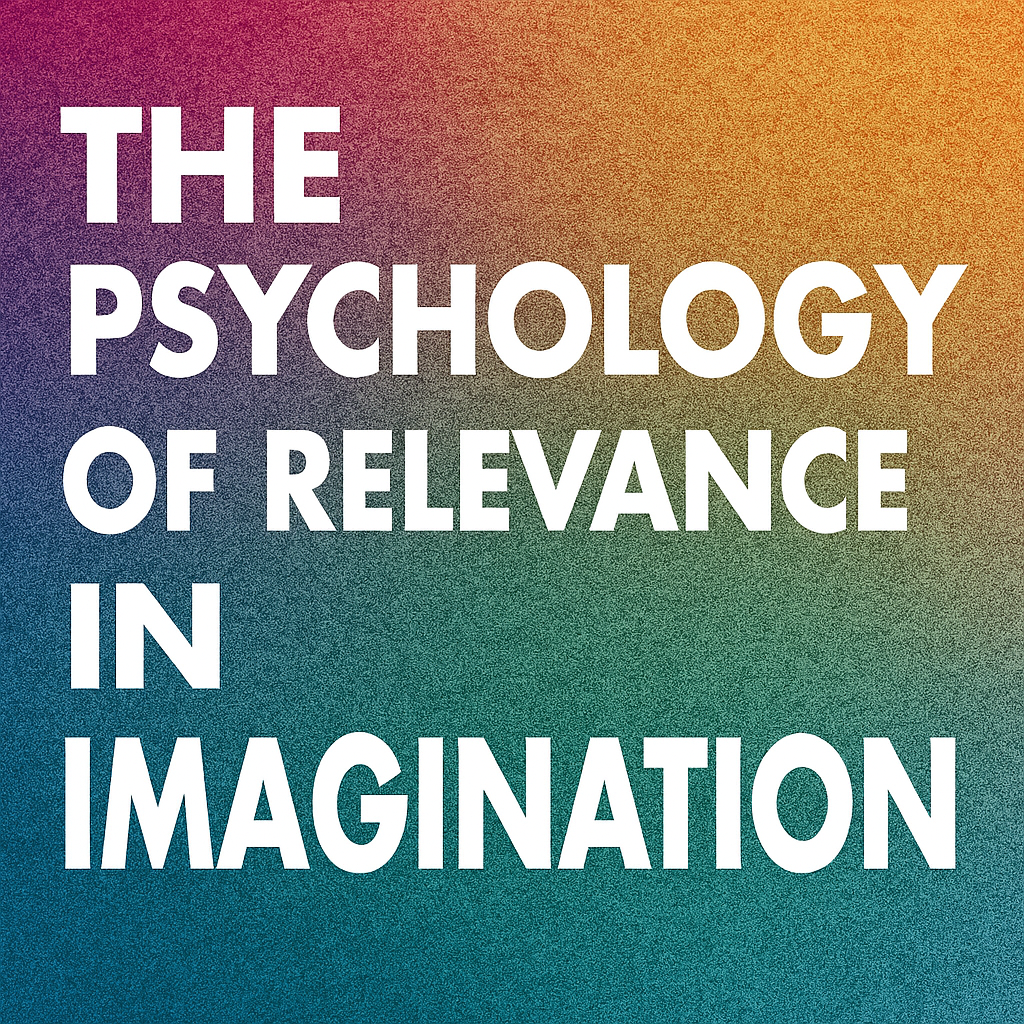
Political Relevance In Imagination
Imagination often reflects political relevance, where power structures and governance shape symbolic meaning. Political frameworks provide cues that guide imaginative thought toward collective identity and social change. Relevance emerges when imagination interprets political ideals such as freedom, democracy, or authority. For example, imaginative visions of utopia often reflect political aspirations for justice and equality. Political relevance ensures that imagination resonates with societal struggles and aspirations. It also strengthens communication, as imaginative ideas gain traction when aligned with political discourse. Without political relevance, imagination risks becoming disconnected from collective action. Thus, politics plays a vital role in sustaining imaginative relevance across societies.
- Politics frames imaginative resonance
- Power structures shape symbolic meaning
- Governance guides imaginative continuity
- Freedom inspires imaginative visions
- Democracy strengthens collective relevance
- Authority anchors symbolic interpretation
- Justice enhances imaginative resonance
- Equality shapes imaginative direction
- Collective action depends on political relevance
- Disconnection occurs without political resonance
Artistic Relevance In Imagination
Art provides symbolic frameworks that sustain imaginative relevance through creative expression. Artistic forms such as painting, music, and literature shape imaginative thought by embedding meaning in aesthetic structures. Relevance emerges when imagination aligns with artistic symbols and cultural resonance. For example, music inspires imaginative visions through rhythm and emotional depth, while visual art frames symbolic interpretation. Artistic relevance ensures that imagination remains connected to cultural creativity and emotional resonance. It also strengthens communication, as artistic forms provide accessible channels for imaginative ideas. Without artistic relevance, imagination risks losing aesthetic depth and symbolic clarity. Thus, art plays a critical role in sustaining imaginative relevance across cultures.
| Artistic Form | Role In Imagination | Relevance Outcome |
|---|---|---|
| Painting | Frames symbolic interpretation | Strengthens visual resonance |
| Music | Inspires emotional depth | Expands imaginative scope |
| Literature | Shapes narrative meaning | Anchors imaginative continuity |
| Sculpture | Embeds symbolic form | Builds cultural relevance |
| Theater | Connects collective imagination | Enhances shared resonance |
Spiritual Relevance In Imagination
Imagination often draws upon spiritual frameworks that provide symbolic meaning and relevance. Spiritual traditions offer metaphors, rituals, and symbols that guide imaginative thought. Relevance emerges when imagination aligns with spiritual values such as transcendence, harmony, and renewal. For example, meditation practices inspire imaginative visions of balance and clarity. Spiritual relevance ensures that imagination connects with deeper dimensions of identity and collective meaning. It also strengthens continuity, as spiritual symbols often persist across cultures and generations. Without spiritual relevance, imagination risks losing depth and symbolic richness. Thus, spirituality plays a vital role in sustaining imaginative resonance across diverse contexts.
| Spiritual Symbol | Role In Imagination | Relevance Outcome |
|---|---|---|
| Light | Represents transcendence | Inspires clarity and renewal |
| Circle | Frames unity | Strengthens collective resonance |
| Flame | Symbolizes transformation | Guides imaginative rebirth |
| Water | Embodies purification | Anchors imaginative flow |
| Mountain | Reflects stability | Builds spiritual continuity |
Economic Relevance In Imagination
Imagination is shaped by economic relevance, where material conditions and resources guide symbolic meaning. Economic frameworks provide boundaries that determine what is possible and sustainable in imaginative thought. Relevance emerges when imagination aligns with economic realities such as scarcity, abundance, and distribution. For example, imaginative visions of prosperity often reflect economic aspirations for stability and growth. Economic relevance ensures that imagination remains connected to practical survival and collective progress. It also strengthens communication, as imaginative ideas gain traction when they resonate with shared economic concerns. Without economic relevance, imagination risks becoming unrealistic or disconnected from lived experience. Thus, economics plays a critical role in sustaining imaginative relevance across societies.
- Economics frames imaginative boundaries
- Scarcity shapes symbolic meaning
- Abundance inspires imaginative visions
- Distribution guides collective resonance
- Prosperity strengthens imaginative relevance
- Stability anchors symbolic continuity
- Growth expands imaginative scope
- Survival depends on economic relevance
- Communication thrives on shared concerns
- Disconnection occurs without economic resonance
Philosophical Relevance In Imagination
Philosophy provides structured frameworks that shape imaginative relevance through abstract reasoning. Imagination aligns with philosophical principles when it interprets concepts such as existence, meaning, and truth symbolically. Relevance emerges when imagination connects philosophical inquiry to creative exploration. For example, existential philosophy inspires imaginative visions of freedom and authenticity. Philosophical relevance ensures that imagination remains connected to intellectual depth and symbolic clarity. It also strengthens communication, as imaginative ideas gain resonance when aligned with philosophical discourse. Without philosophical relevance, imagination risks becoming superficial or incoherent. Thus, philosophy plays a vital role in sustaining imaginative relevance across disciplines.
| Philosophical Concept | Role In Imagination | Relevance Outcome |
|---|---|---|
| Existence | Frames symbolic meaning | Anchors imaginative authenticity |
| Freedom | Inspires creative visions | Expands imaginative scope |
| Truth | Guides symbolic clarity | Strengthens imaginative resonance |
| Meaning | Shapes narrative direction | Builds symbolic continuity |
| Identity | Connects selfhood | Enhances imaginative relevance |
Psychological Depth And Relevance
Imagination thrives when psychological depth ensures relevance across emotional and cognitive layers. Depth allows imagination to explore symbolic meaning beyond surface associations. Relevance emerges when imagination connects with unconscious processes, archetypes, and emotional resonance. For example, dreams provide imaginative scenarios that reflect psychological depth and symbolic continuity. Psychological relevance ensures that imagination remains authentic and impactful. It also strengthens communication, as imaginative ideas gain resonance when they reflect shared psychological patterns. Without psychological depth, imagination risks becoming shallow and disconnected. Thus, psychology plays a critical role in sustaining imaginative relevance across personal and collective contexts.
- Depth anchors imaginative authenticity
- Unconscious processes shape symbolic meaning
- Archetypes strengthen imaginative resonance
- Dreams provide imaginative continuity
- Emotional resonance enhances symbolic relevance
- Shared patterns guide imaginative clarity
- Authenticity depends on psychological depth
- Communication thrives on shared resonance
- Shallow imagination lacks psychological relevance
- Psychology sustains imaginative continuity
Aesthetic Relevance In Imagination
Aesthetics provide symbolic frameworks that sustain imaginative relevance through beauty and form. Imagination aligns with aesthetic principles when it interprets patterns, harmony, and proportion symbolically. Relevance emerges when imagination connects aesthetic values to creative exploration. For example, symmetry inspires imaginative visions of balance, while color shapes symbolic resonance. Aesthetic relevance ensures that imagination remains connected to sensory experience and cultural creativity. It also strengthens communication, as aesthetic forms provide accessible channels for imaginative ideas. Without aesthetic relevance, imagination risks losing clarity and symbolic richness. Thus, aesthetics play a vital role in sustaining imaginative relevance across cultures.
| Aesthetic Element | Role In Imagination | Relevance Outcome |
|---|---|---|
| Symmetry | Frames balance | Anchors imaginative clarity |
| Color | Shapes symbolic resonance | Expands imaginative scope |
| Proportion | Guides harmony | Strengthens imaginative continuity |
| Rhythm | Inspires flow | Builds symbolic relevance |
| Texture | Connects sensory experience | Enhances imaginative depth |
Communal Rituals And Relevance
Imagination often finds relevance in communal rituals that provide symbolic continuity and shared meaning. Rituals act as structured practices that anchor imaginative thought in collective identity. Relevance emerges when imagination interprets ritual symbols in ways that resonate with cultural values and emotional states. For example, seasonal festivals are a huge way to inspire imaginative ideas and visions of renewal, while ceremonies frame symbolic transitions. Communal rituals ensure that imagination remains connected to collective experience and cultural heritage. They also strengthen communication, as ritual symbols provide recognizable anchors for imaginative ideas. Without ritual relevance, imagination risks losing coherence and cultural resonance. Thus, rituals play a vital role in sustaining imaginative relevance across communities.
| Ritual Type | Role In Imagination | Relevance Outcome |
|---|---|---|
| Festival | Inspires renewal | Anchors imaginative continuity |
| Ceremony | Frames symbolic transition | Strengthens collective resonance |
| Tradition | Preserves cultural meaning | Builds imaginative heritage |
| Celebration | Connects communities | Enhances shared relevance |
| Memorial | Sustains collective memory | Guides imaginative identity |
Psychological Archetypes And Relevance
Imagination is shaped by psychological archetypes that provide symbolic depth and relevance. Archetypes act as universal patterns that guide imaginative thought across cultures and contexts. Relevance emerges when imagination interprets archetypes such as the hero, the shadow, or the guide. For example, imaginative visions of journeys often reflect the archetype of transformation. Archetypes ensure that imagination remains connected to shared psychological structures. They also strengthen communication, as archetypal symbols resonate across diverse audiences. Without archetypal relevance, imagination risks becoming fragmented and disconnected. Thus, archetypes play a critical role in sustaining imaginative relevance across personal and collective contexts.
- Archetypes provide universal symbolic patterns
- The hero inspires imaginative transformation
- The shadow anchors symbolic depth
- The guide strengthens imaginative direction
- Archetypes connect imagination across cultures
- Shared structures enhance symbolic resonance
- Communication thrives on archetypal relevance
- Fragmentation occurs without archetypal meaning
- Archetypes sustain imaginative continuity
- Depth emerges through symbolic universality
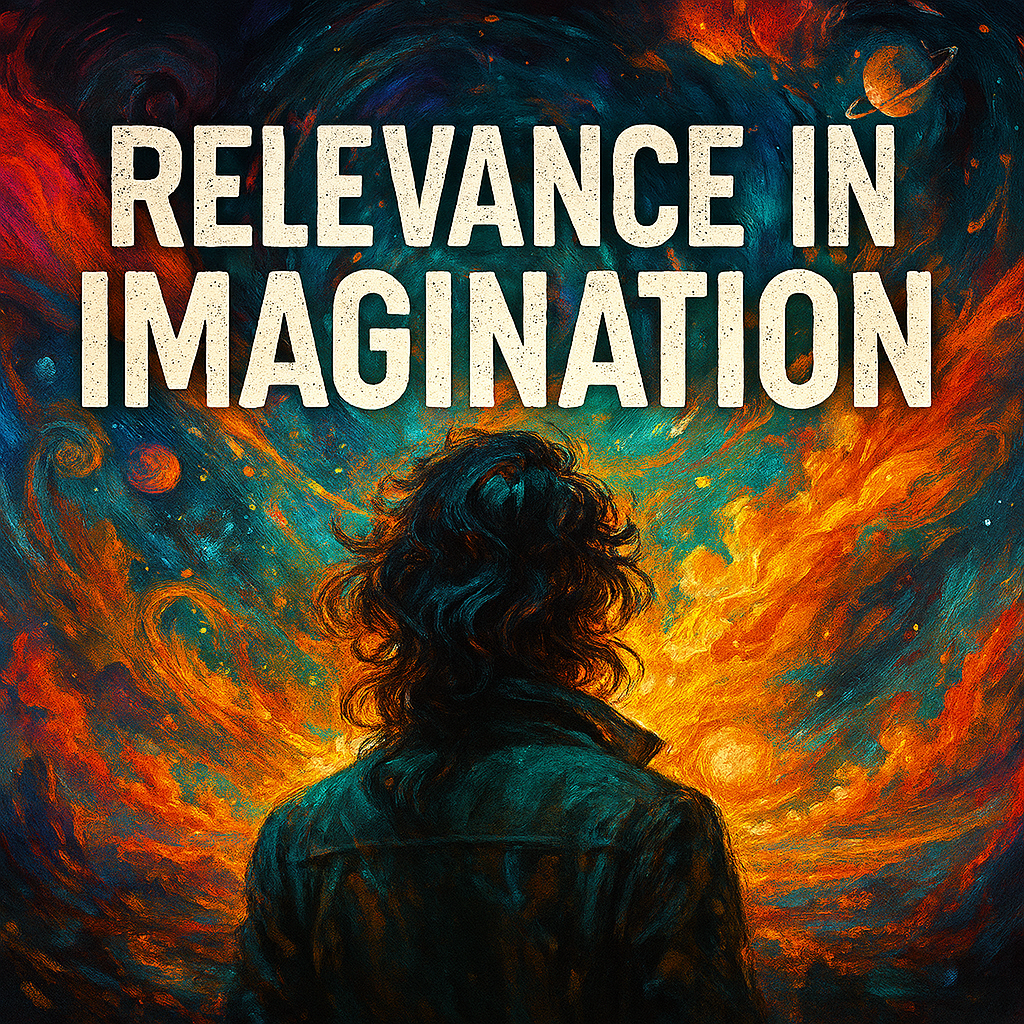
Memory And Relevance In Imagination
Memory provides the foundation for imaginative relevance by anchoring creativity in lived experience. Memories act as symbolic cues that guide imaginative thought toward coherence and meaning. Relevance emerges when imagination interprets memories through symbolic frameworks that resonate with identity. For example, childhood memories inspire imaginative visions of innocence and nostalgia. Memory ensures that imagination remains connected to personal history and collective continuity. It also strengthens communication, as shared memories provide recognizable anchors for imaginative ideas. Without memory relevance, imagination risks becoming detached from identity and cultural heritage. Thus, memory plays a vital role in sustaining imaginative relevance across time.
| Memory Type | Role In Imagination | Relevance Outcome |
|---|---|---|
| Childhood | Inspires innocence | Anchors imaginative nostalgia |
| Collective | Frames cultural continuity | Strengthens shared resonance |
| Personal | Guides identity | Builds imaginative authenticity |
| Generational | Connects past and present | Sustains symbolic relevance |
| Historical | Preserves heritage | Enhances imaginative depth |
Future Orientation And Relevance
Imagination thrives when future orientation ensures relevance across possibilities and aspirations. Future relevance allows imagination to project scenarios that anticipate outcomes and guide progress. Relevance emerges when imagination aligns with visions of innovation, sustainability, and transformation. For example, ecological futures inspire imaginative visions of balance and continuity. Future orientation ensures that imagination remains connected to collective aspirations and practical goals. It also strengthens resilience, as imaginative thought prepares individuals and communities for change. Without future relevance, imagination risks stagnation, failing to adapt to evolving contexts. Thus, future orientation plays a critical role in sustaining imaginative relevance across time.
- Future orientation guides imaginative projection
- Innovation inspires imaginative visions
- Sustainability strengthens symbolic relevance
- Transformation anchors imaginative continuity
- Aspirations expand imaginative scope
- Progress depends on future relevance
- Resilience emerges through imaginative anticipation
- Communities prepare through imaginative futures
- Stagnation occurs without future orientation
- Imagination sustains continuity across time
Integrative Relevance In Imagination
Imagination reaches its fullest potential when relevance is integrative, combining cognitive, emotional, cultural, and symbolic dimensions. Integration ensures that imagination is multidimensional, connecting diverse frameworks into coherent meaning. Relevance emerges when imagination synthesizes multiple markers into unified creative thought. For example, ecological imagination integrates cultural narratives, emotional resonance, and symbolic continuity. Integrative relevance ensures that imagination remains adaptive, authentic, and transformative. It also strengthens communication, as integrated imaginative ideas resonate across diverse audiences. Without integrative relevance, imagination risks fragmentation, losing coherence and impact. Thus, integration plays a vital role in sustaining imaginative relevance across contexts and disciplines.
| Dimension | Role In Imagination | Relevance Outcome |
|---|---|---|
| Cognitive | Frames symbolic clarity | Anchors imaginative coherence |
| Emotional | Shapes resonance | Strengthens imaginative depth |
| Cultural | Provides continuity | Builds collective relevance |
| Symbolic | Guides meaning | Enhances imaginative universality |
| Temporal | Connects past and future | Sustains imaginative progression |
Conclusion – Relevance As The Architecture Of Imagination
The psychology of relevance in imagination demonstrates that creativity is not random but structured by meaning. Relevance in direct acts as the architecture that connects imagination with thought to cognition, emotion, structure, culture, history, and future orientation. Without relevance, imagination risks incoherence, fragmentation, and disconnection. With relevance, imagination becomes adaptive, resonant, and transformative. Imagination thrives when relevance is preserved, ensuring that creative thought remains meaningful and impactful. The psychology of relevance is therefore essential for understanding how imagination sustains human progress, cultural identity, and collective continuity.
Join The Discussion
How do you interpret relevance in your own imaginative processes, whether in personal creativity, cultural interpretation, or collective vision?
#Psychology #Imagination #Relevance #SymbolicThinking #CulturalResonance #CognitiveScience #EmotionalInsight #AdaptiveCreativity #TemporalAwareness #CollectiveMeaning #FutureVision #Archetypes #Memory #Integration



